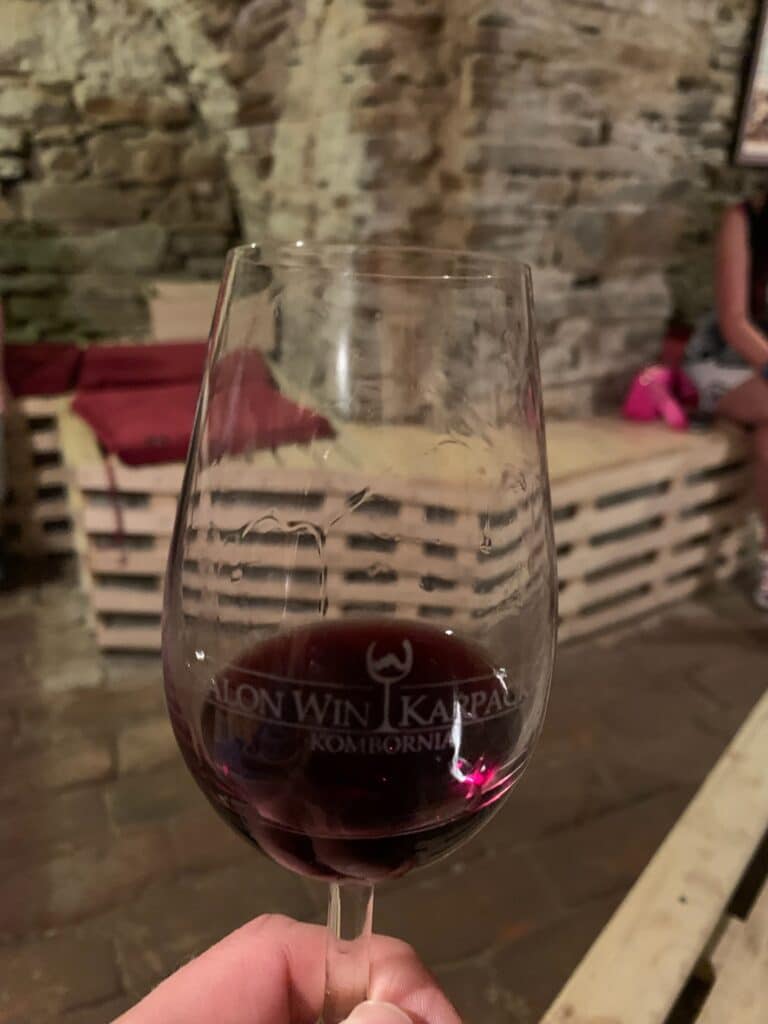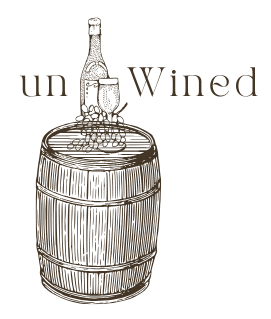Carpathian Wine Bar
We’ll make our start in a place that’s probably totally alien to many people and definitely not associated with wine, i.e. a Sub-Carpathian region in Poland! One summer day, we found ourselves in a city called Krosno in Lower Beskid in Southern Poland. From Krosno, we made our way to a nearby village of Kombornia with an 18th century manor house at its centre. The surrounding area can actually boast quite a few of those, which isn’t always the case in this strange country wrecked by two world wars and 50 years of communism. There was a certain serenity in this idyllic countryside setting. Although the house had been renovated and the exterior presented itself quite well, inside the effects of refurbishment were slowly fading away. It felt dated and not necessarily in a nice way. However, Kombornia Manor has one little gem hidden away inside a small hill on the estate’s grounds. This is where we found the Carpathian Wine Bar (or Salon, own translation; original Salon Win Karpackich).
The Salon is actually a large cellar. We immediately felt the temperature drop as we entered. Interior was definitely cooler and more humid than outside. Upon entry, we were welcomed by rows of wine bottles, which can be purchased later if anything catches the visitor’s eye. At the end of the corridor, we spotted a huge map illustrating the concept behind this Salon. Carpathian mountains were snaking through 8 countries in Eastern and Central Europe. We didn’t have the time to linger as Ryszard Skotniczny saw us to our places around the corner where the usual tasting set up of wine glasses and spitters was waiting for us. Ryszard created the Salon and incidentally also owns the whole place! He quickly gauged the collective wine experience and knowledge of the group and took us on a crazy wine journey through the Carpathian region.

We flew through Slovakia, Moldova, Romania and Hungary. We sometimes made a quick jump back to our home country, Poland. “Fly” seems like an appropriate term since we tasted 14 wines in less than an hour! The variety of wines was mind-blowing. We tried quite revolting attempts at a proper red wine from nearby wineries, way too sweet Romanian juice-like concoctions, but also delightfully complex aged white wines from Slovakia. We experienced some classics from Eger with rounded tannins and earthy notes that showed a great promise. “It’s not my goal for you to like every wine you taste today” Ryszard cheerfully explained. “After all, you all have different preferences and tastes, which makes it an impossible job. However, what I can do instead is to demonstrate the variety of what you can find in this wonderful region”. I really start to appreciate this approach given that quality is a relative concept, and it definitely helps to try wines made more skilfully and those which were given less attention by the winemaker. This is how we build up our mental library of flavours and likes, that ultimately helps us find and refine what we enjoy most. It’s also quite a refreshing and honest approach. Whenever I visit a winemaker directly, they will never admit that they have given a mediocre flavour to some of their wines on purpose in order to squeeze out as much as they can from their harvest and offer the wine at a budget price.


After the tasting, our sommelier and host was very generous with his time. We lingered on and chatted about decent local wineries and exchanged ideas for future wine trips to Hungary. Although we liked quite a few wines, we left the Salon with just two bottles. After a recent trip to Tuscany (watch this space for more details!) storage at home remains a bit of a challenge so I needed to be reasonable this time around.
The first bottle is a white wine, a 2016 Quercus Lipovina by Chateau Grand Bari from Slovakian Tokaji. Slovakian Tokaji? You might be wondering if I accidentally mixed up some countries. Definitely not! We learn that while Tokaji is a historical region that’s mostly associated with Hungary, its northern edge is actually part of today’s Slovakia. The wine itself is delightful and has aged very gracefully. It has a rich nose dominated by a lime tree honey with a hint of petrol. The wine is definitely full-bodied, well-balanced and complex. I detect honey, a bit of citrus fruits and even some pineapple. The finish is long and satisfying. It’s available for just 55 zł (c. £10).

The second one is a red wine, a 2016 Varvedo Cuvee by Toth Ferenc from Eger, Hungary. During the tasting we tried a Kekfrankos from the same winemaker but unfortunately that one was out of stock so I took a risk and went for Varvedo Cuvee. The bet definitely payd off! This classic Bordeaux blend (Cabernet Sauvignon, Cabernet Franc and Merlot) is a very pleasant medium bodied wine. I smell strong earthy notes supplemented by red fruits. On the palate chocolate and oaky notes dominate, but I can also taste some plums and blackberries. It definitely benefits from decanting it for 30 minutes or so. This one comes at 100 zł (c. £18).

The Salon is definitely a very interesting place and a thought-provoking idea. Rather than focus on a single country, the idea is to present the variety of wines and winemakers united by a mountain range spanning numerous countries. Although they produce different wines and are separated by national borders, in a way, they probably have more in common with each other than some winemakers from France or Italy or even winemakers from their home countries which do not feel the influence of the mountains. The Salon allows its guests to explore quite niche wines. Many of them are quite basic but every now and then we can find a real treat at a very reasonable price. We explored a true variety of wines, but for me it worked quite well because of the uniting concept behind the selection. What a contrast to some introductory tastings where we are asked to try a white from New Zealand, then a red from Chile and go back to the old good Bordeaux again. We might taste some wines but we learn very little. We also enjoyed the format of the tasting – it was a snappy, sensory experience with limited theoretical lectures. I believe anybody could enjoy it regardless of their “wine experience”. I definitely recommend it to anybody who finds themselves in this region!
Let’s also mention that the area, especially the city of Krosno, is famous for glass making. The local museum is a great way to learn more about the history of this craft and industry, but also purchase some unique hand-made goods. I also recommend an outlet shop from Krosno company (confusingly named exactly the same as the city!), where high quality wine glasses, decanters, and other glass items can be purchased at very reasonable prices. The boot of my car was definitely full of wine glasses as we all know there’s never enough of them. I wonder, what will fill them in the future? Cheers!


Carpathian Wine Bar: www.rsf.pl/pl/salon-win-karpackich.
Glass Heritage Centre: www.miastoszkla.pl.

Carpathian Wine Bar Read More »


